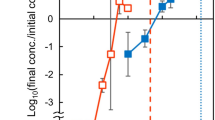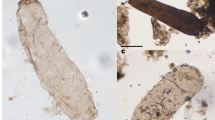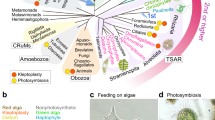Abstract
Cyanobacteria have played a pivotal role in the history of life on Earth being the first organism to carry out oxygenic photosynthesis, which changed atmospheric chemistry and allowed the evolution of Eukarya. Chloroplasts are the cellular organelles of photoautotrophic eukaryotes in which photosynthesis is conducted. Although the initial suggestion from Mereschkowsky (1905) that cyanobacteria are the ancestors of chloroplasts was greeted with skepticism, the idea is now widely accepted. Here we attempt to resolve and date the cyanobacterial ancestry of the chloroplast using phylogenetic analysis and molecular clocks, because until now, the long-standing question of, from which, among the vast diversity of cyanobacteria, did chloroplasts evolve, has not been resolved. We found that chloroplasts form a monophyletic lineage, are most closely related to subsection I, N2-fixing unicellular cyanobacteria (Order Chroococcales), and heterocyst-forming Order Nostocales cyanobacteria are their sister group. The appearance of Nostocales and of Chroococcales occurred during the Paleoproterozoic, and chloroplasts appeared in the mid-Proterozoic. The capability of N2-fixation in cyanobacteria appeared once during the late Archaen and early Proterozoic eons. Furthermore, we found that oxygen-evolving cyanobacteria could have appeared in the Archean. Our results suggest that a free-living cyanobacterium with the capacity to store starch via oxygenic CO2 fixation, and to fix atmospheric N2, would be a very important intracellular acquisition, which, as can be recounted today from several lines of evidence, would have become the chloroplast by endosymbiosis.
Similar content being viewed by others
Article PDF
Author information
Authors and Affiliations
Corresponding author
Rights and permissions
About this article
Cite this article
Falcon, L., Magallon, S. & Castillo, A. Dating the cyanobacterial ancestor of the chloroplast. Nat Prec (2009). https://doi.org/10.1038/npre.2009.3696.1
Received:
Accepted:
Published:
DOI: https://doi.org/10.1038/npre.2009.3696.1



